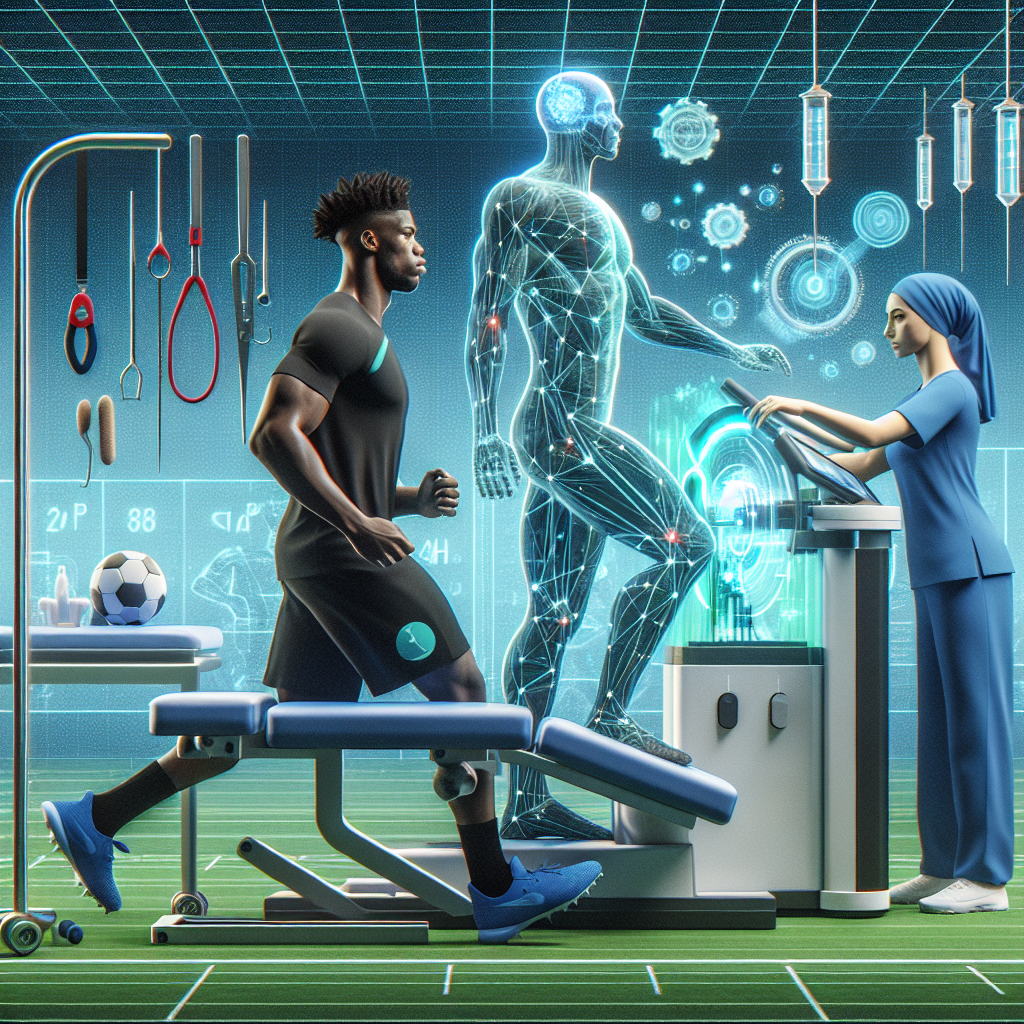The Use of AI in Sports Injury Rehabilitation Programs
In recent years, artificial intelligence (AI) has made significant advancements in various fields, including healthcare. One area where AI is increasingly being used is in sports injury rehabilitation programs. AI has the potential to revolutionize the way athletes recover from injuries and get back to peak performance. In this article, we will explore the use of AI in sports injury rehabilitation programs and its benefits.
Benefits of AI in Sports Injury Rehabilitation Programs
1. Personalized Treatment Plans: One of the key benefits of using AI in sports injury rehabilitation programs is the ability to create personalized treatment plans for each athlete. AI algorithms can analyze the athlete’s injury, medical history, and performance data to develop a customized rehabilitation program that is tailored to their specific needs. This personalized approach can help athletes recover more quickly and reduce the risk of re-injury.
2. Real-time Monitoring: AI technology can also be used to monitor athletes’ progress in real-time during their rehabilitation program. By tracking key metrics such as range of motion, strength, and pain levels, AI algorithms can provide feedback to athletes and their healthcare providers on their progress and make adjustments to their treatment plan as needed. This real-time monitoring can help athletes stay on track with their rehabilitation and optimize their recovery.
3. Predictive Analytics: AI algorithms can analyze large amounts of data to predict the likelihood of an athlete experiencing a future injury based on their injury history, performance metrics, and other factors. By identifying athletes who are at a higher risk of injury, healthcare providers can develop targeted prevention strategies to help reduce the risk of future injuries and keep athletes healthy and performing at their best.
4. Virtual Rehabilitation: AI technology can also be used to create virtual rehabilitation programs that allow athletes to complete their exercises and therapy sessions from the comfort of their own home. Virtual rehabilitation programs can include interactive exercises, instructional videos, and real-time feedback to help athletes stay engaged and motivated during their recovery process.
5. Enhanced Communication: AI technology can improve communication between athletes, coaches, and healthcare providers by providing a centralized platform for sharing information and tracking progress. By streamlining communication and data sharing, AI can help ensure that everyone involved in the athlete’s rehabilitation program is on the same page and working towards the same goal.
Frequently Asked Questions
Q: How does AI analyze data to create personalized treatment plans for athletes?
A: AI algorithms can analyze large amounts of data, including the athlete’s injury history, medical records, performance metrics, and other relevant information, to identify patterns and trends that can inform the development of a personalized treatment plan. By using machine learning techniques, AI can continuously learn and adapt its algorithms based on new data, allowing for continuous optimization of the athlete’s rehabilitation program.
Q: Can AI technology be used to prevent injuries in athletes?
A: Yes, AI technology can be used to predict the likelihood of an athlete experiencing a future injury based on their injury history, performance metrics, and other factors. By identifying athletes who are at a higher risk of injury, healthcare providers can develop targeted prevention strategies to help reduce the risk of future injuries and keep athletes healthy and performing at their best.
Q: How do athletes benefit from real-time monitoring during their rehabilitation program?
A: Real-time monitoring allows athletes and their healthcare providers to track key metrics such as range of motion, strength, and pain levels during their rehabilitation program. By providing feedback on their progress in real-time, athletes can make adjustments to their treatment plan as needed and stay on track with their recovery. This real-time monitoring can help athletes optimize their rehabilitation and return to peak performance more quickly.
Q: What are the advantages of virtual rehabilitation programs for athletes?
A: Virtual rehabilitation programs allow athletes to complete their exercises and therapy sessions from the comfort of their own home, making it more convenient and accessible for them to stay on track with their recovery. Virtual rehabilitation programs can include interactive exercises, instructional videos, and real-time feedback to help athletes stay engaged and motivated during their rehabilitation process.
Q: How does AI technology improve communication between athletes, coaches, and healthcare providers?
A: AI technology provides a centralized platform for sharing information and tracking progress, making it easier for athletes, coaches, and healthcare providers to communicate and collaborate effectively. By streamlining communication and data sharing, AI can ensure that everyone involved in the athlete’s rehabilitation program is on the same page and working towards the same goal.
In conclusion, the use of AI in sports injury rehabilitation programs has the potential to revolutionize the way athletes recover from injuries and get back to peak performance. By creating personalized treatment plans, monitoring progress in real-time, predicting future injuries, offering virtual rehabilitation programs, and enhancing communication, AI technology can help athletes optimize their recovery and reduce the risk of re-injury. As AI continues to evolve and improve, its role in sports injury rehabilitation programs is likely to become even more prominent, benefiting athletes and healthcare providers alike.

